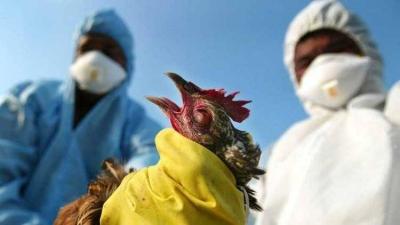Avian influenza is spreading significantly and is raising concerns among many infectious disease experts more than ever, with four new developments that could make the disease the "next pandemic," according to a report by Business Insider. The H5N1 avian influenza virus has led to the deaths of tens of millions of birds worldwide; however, the Centers for Disease Control and Prevention (CDC) states that "the risk to humans is low." It seems the chance of most people contracting the H5N1 virus is "extremely low," if it exists at all, at this time. Only three people in the United States have tested positive for the virus since its sudden outbreak among livestock, all of whom had direct contact with infected cattle, according to Science Alert.
## Growing Threat
However, infectious disease experts are increasingly concerned that the H5N1 virus could continuously jump to humans and begin to spread among us. This is not a foregone conclusion, but several recent developments suggest that it poses an increasing threat. This virus is a key candidate to be the "next pandemic," and four developments in the past month have raised experts' concerns.
In March, the World Health Organization announced that a two-year-old child became the first human case of H5N1 in Australia. After returning from a trip to Kolkata, India, the child displayed symptoms of "loss of appetite, fever, cough, vomiting, and irritability," according to the WHO. This resulted in the child being hospitalized for two and a half weeks, including time in intensive care. With human cases emerging in different parts of the world, epidemiologists like Christopher Dye are becoming more worried. Dye, a professor and senior research fellow at the University of Oxford, stated, "There is a massive amount of virus out there right now... It is clearly changing and doing new and unpredictable things." He added, "Influenza has always been a concern for decades, and this particular strain for at least two decades." He continued, "But now, the level of concern has risen, I think, greater than ever."
## Rodents and Transmission of Avian Influenza to Households
On Tuesday, the U.S. Department of Agriculture reported that a total of 47 house mice had tested positive for the H5N1 virus in New Mexico. Dr. Monica Gandhi, a professor of medicine and assistant chief of the HIV, Infectious Diseases, and Global Medicine department at the University of California, San Francisco, expressed concern, stating, "Mice are everywhere... They are around other animals and are often around humans... This is somewhat concerning." Samples were collected from the sick mice in early May. According to The Telegraph, scientists suspect that mice, as well as some domestic cats, may have contracted the virus from drinking raw milk from infected cows. Public health experts strongly advise against consuming unpasteurized milk, also known as "raw" milk. Rick Bright, former director of the Biomedical Advanced Research and Development Authority, remarked, "This brings the virus closer to human homes."
## The Virus Has Begun to "Adapt"
One mutation suggests that the virus has begun to adapt. When the CDC analyzed a virus sample from the second infected U.S. farm worker, they discovered "a mutation in the virus's replication mechanism," which is how it enters its host's cells to make copies of itself. The CDC stated in a May announcement that this change is "related to viral adaptation to mammalian hosts." The statement noted that studies conducted on mice indicate that this type of genetic mutation in the virus is associated with more severe illness and enhanced viral replication. However, this "does not make it a human virus yet," but "that could change."
## "Concerning" Cough
One of the cases confirmed with the H5N1 virus in the United States exhibited "coughing and a sore throat," indicating that the virus was present in the respiratory system of that worker. It is easier for the virus to spread through coughing or sneezing.
## Good News
The first piece of good news is that the H5N1 virus is still not well adapted to humans enough to spread between us. The CDC has not reported any evidence that the farm worker with a cough is transmitting the virus to anyone else. However, this does not mean that the H5N1 virus is incapable of mutating to the point of human-to-human transmission. The second piece of good news is that avian influenza is not COVID-19. Scientists have been tracking this virus and its entire viral family tree for decades to monitor any signs of increasing threats to humans. As a result, key components of a vaccine are already on standby. The United States has begun producing millions of vaccines developed by the CDC.




